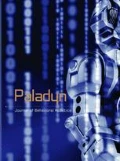Abstract
Different approaches have been tried to navigate robots, including those based on visual memories. The Sparse Distributed Memory (SDM) is a kind of associative memory based on the properties of high dimensional binary spaces. It exhibits characteristics such as tolerance to noise and incomplete data, ability to work with sequences and the possibility of one-shot learning. Those characteristics make it appealing to use for robot navigation. The approach presented in this work was to navigate a robot using sequences of visual memories stored into a SDM. The robot makes intelligent decisions, such as selecting only relevant images to store during path learning, adjusting memory parameters to the level of noise and inferring new paths from learnt trajectories. The method of encoding the information may influence the tolerance of the SDM to noise and saturation. The present paper reports novel results of the limits of the model under different typical navigation problems. An algorithm to build a topological map of the environment based on the visual memories is also described.
Similar content being viewed by others
References
Steven Johnson. Mind wide open. Scribner, New York, 2004.
Jeff Hawkins and Sandra Blakeslee. On Intelligence. Times Books, New York, 2004.
Pentti Kanerva. Sparse Distributed Memory. MIT Press, Cambridge, 1988.
Robert M. Harnish. Minds, brains, computers: an historical introduction to the foundations of cognitive science. Wiley-Blackwell, 2002.
Rajesh P.N. Rao and Olac Fuentes. Hierarchical learning of navigational behaviors in an autonomous robot using a predictive sparse distributed memory. Machine Learning, 31(1–3):87–113, April 1998.
Michiko Watanabe, Masashi Furukawa, and Yukinori Kakazu. Intelligent agv driving toward an autonomous decentralized manufacturing system. Robotics and computer-integrated manufacturing, 17(1–2):57–64, February–April 2001.
Mateus Mendes, A. Paulo Coimbra, and Manuel Crisóstomo. AI and memory: Studies towards equipping a robot with a sparse distributed memory. In Proceedings of the IEEE International Conference on Robotics and Biomimetics, pages 1743–1750, Sanya, China, December 2007.
Mateus Mendes, Manuel Crisóstomo, and A. Paulo Coimbra. Robot navigation using a sparse distributed memory. In Proceedings of the 2008 IEEE International Conference on Robotics and Automation, Pasadena, California, USA, May 2008.
Yoshio Matsumoto, Kazunori Ikeda, Masayuki Inaba, and Hirochika Inoue. Exploration and map acquisition for view-based navigation in corridor environment. In Proc. of the Int. Conference on Field and Service Robotics, pages 341–346, 1999.
Yoshio Matsumoto, Masayuki Inaba, and Hirochika Inoue. View-based navigation using an omniview sequence in a corridor environment. In Machine Vision and Applications, 2003.
Hiroshi Ishiguro and Saburo Tsuji. Image-based memory of environment. In in Proc. IEEE/RSJ Int. Conf. Intelligent Robots and Systems, 1996.
Niall Winters and José Santos-Victor. Mobile robot navigation using omni-directional vision. In In Proc. 3rd Irish Machine Vision and Image Processing Conference (IMVIP’99), pages 151–166, 1999.
Min Meng and Avinash C. Kak. Mobile robot navigation using neural networks and nonmetrical environment models. In IEEE Control Systems, pages 30–39, 1993.
Mateus Mendes, Manuel Crisóstomo, and A. Paulo Coimbra. Electronic Engineering and Computing Technology, chapter Encoding Data to use with a Sparse Distributed Memory. Springer, Netherlands, April 2010.
Bohdana Ratitch and Doina Precup. Sparse distributed memories for on-line value-based reinforcement learning. In ECML, 2004.
Rajesh P. N. Rao and Dana H. Ballard. Object indexing using an iconic sparse distributed memory. Technical Report 559, The University of Rochester, Computer Science Department, Rochester, New York, July 1995.
Stephen B. Furber, John Bainbridge, J. Mike Cumpstey, and Steve Temple. Sparse distributed memory using n-of-m codes. Neural Networks, 17(10):1437–1451, 2004.
Yoshio Matsumoto, Masayuki Inaba, and Hirochika Inoue. View-based approach to robot navigation. In Proc. of 2000 IEEE/RSJ Int. Conference on Intelligent Robots and Systems (IROS 2000), 2000.
Mateus Mendes, Manuel Crisóstomo, and A. Paulo Coimbra. Assessing a sparse distributed memory using different encoding methods. In Proceedings of the 2009 International Conference of Computational Intelligence and Intelligent Systems, pages 37–42, London, UK, July 2009.
Joy Bose. A scalable sparse distributed neural memory model. Master’s thesis, University of Manchester, Faculty of Science and Engineering, Manchester, UK, 2003.
Louis A. Jaeckel. An alternative design for a sparse distributed memory. Technical report, Research Institute for Advanced Computer Science, NASA Ames Research Center, July 1989.
Author information
Authors and Affiliations
Corresponding author
About this article
Cite this article
Mendes, M., Paulo Coimbra, A. & Crisóstomo, M.M. Intelligent robot navigation using view sequences and a sparse distributed memory. Paladyn 1, 240–254 (2010). https://doi.org/10.2478/s13230-011-0010-z
Received:
Accepted:
Published:
Issue Date:
DOI: https://doi.org/10.2478/s13230-011-0010-z




